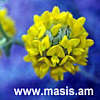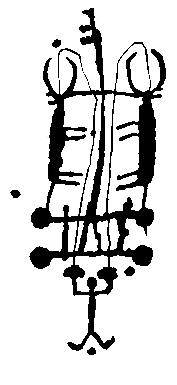 |
||||||||||||||||||||||||||||||||||
|
||||||||||||||||||||||||||||||||||
|
||||||||||||||||||||||||||||||||||
|
|||||||||||||||||||||||
 |
|||||||||||||||||||||||
| - | |||||||||||||||||||||||
|
||||||
5-7 Day moderately challenging hiking /camping safari maximum altitude: 3597 meters The Volcanic Lake district in the Geghama Range is best described as a lunar landscape gone fertile: the mountains are actually a chain of dormant volcanoes that spewed millions of tons of lava on the valley floor as they sealed off Sevan on its Western side. From the air, the craters of some of the larger mountains can be seen, while from below they are hidden from view. The entire range is covered with mountain steppe grass and wildflowers, and experiences 5 of the seven spring times Armenia enjoys during the warm months of the year. DAY 1: From Abovian the road begins an ascent on the Geghama Mountain Range and passes a series of the villages of Nor Giugh, Akunk, Katnaghpiur (Milk Springs) and Zar before arriving at Sevaberd. Native poppies, goldenrod, blue yellow and red straw flowers--even the deep green clover cover the mountain meadows from Sevaberd on up, making prime grazing for Yesdi villagers and their flocks of sheep. Yesdi's are a Zoroastrian pastoral community, most of which live along the lower sides of the mountains. In April and May they form an annual exodus to the upper reaches of the mountains. Along with stunning views of Ararat and Lake Sevan, one can run across a friendly shepherd living in a caravan style tent tending his flock. From Sevaberd begin a 10 kilometer hike for the first overnight camp near an upper spring by Gridzor Lake. Gridzor Lake is set into the side of Mt. Azhdahak, and up until mid-June, the mountain edge of the lake may still have snow on the ground while the lower side is covered with wild flowers and mountain grass. The lake itself is divided by seasons: while the mountain side is coated with a thin sheet of ice, the Sevaberd side is warm enough for a bracing dip. A lonely shepherd may be heard singing an ancient song while idly watching his flock. Masses of butterflies and lake birds populate the area, and your first real vista of Ararat and Aragats can be seen from the lakeside. DAYS 2-3: Continue on to the lower side of Mt. Azhdahak (altitude 3597 meters) on the second day, camping just below the crater. At night the stars seem close enough to touch, and a pair of binoculars provides a spectacular display of falling stars. Campers have reported seeing Aragats own version of the Northern Lights from Azhdahak. Inside Azhdahak crater is one of Nature's jewels: a crystal clear lake formed from melting snow. Beginning at Azhdahak, you are walking on top of the spine of the Geghama Mountain Range, and can follow it South to the crest of Mt. Spitakasar (altitude 3556 meters), Poker or Little Spitakasar (altitude 3473 meters) to Vank Lake and Paitasar. DAYS 4-5: Vank Lake and Paitasar were inhabited by ancestral Armenians as far back as the Stone Age, but beginning in the 5th millennium BCE a series of Vishaps (or Dragon Stones) were erected throughout Armenia. The stones average 10 to 15 meters in height, and are carved in the shape of a fish, while some are detailed with oxen and human figures. No one is exactly sure about the significance of the Vishaps, but educated guesses think they are part of a water cult, since they are placed near the source of springs and lakes. At Paitasar (about 4 hour's hike from the Sulema Pass Road), the first evidences of writing in Armenia can be found, pictograms going back to the Paleolithic Era (15,000 BCE). The earliest pictograms mostly show animals (wild deer, rabbits and the first signs of domesticated dogs and goats), water and simple outlines of dwellings, pointing to either an enclosed area (symbolizing land or territory), or perhaps a cave, since there is only one entrance drawn. Mesolithic period pictograms show herds of animals, including mammoths and antelope. The drawings of mammoths might by souvenirs of victory at a hunt, and are a far step away from the little rabbits shown scurrying away in the earlier period. By the Neolithic period, much of the land between the Persian gulf, the Mediterranean Sea and Egypt became a desert. It was a time when the "fertile crescent" developed as the center of civilization, and an increased reliance on hunting tools as well as irrigation grew. The Armenian Plateau began an intensive development in this period, leading to the Copper/Bronze Age, in which the Vishap stones first began to appear. Simple stick figures in the pictograms introduce the person himself into the story of the drawing. There is a more sophisticated iconography in the latter period, and a greater variety in the representations of animals. People are shown not only in standing positions, but holding weapons, bending and in movement. There is one with three figures that could be illustrating a dance, and another that looks as though the person is holding a body. Others show the first recordings of celestial events, swastika shapes that some think are meteors or comets; and the first signs of camels, a domesticated animal used in caravans. 10,000 years of history are inscribed on the rocks at Paitasar and Vank Lake, evidence of a civilization that communicated, domesticated animals, farmed and irrigated the land, one that was aware of the heavens, and began to navigate and trade with neighboring cultures. DAYS 6-7: From Vank Lake the Safari continues from the source of the Azat River at Mt. Geghazar through the Khosrov Nature Preserve to Kakavabert, a 9th-13th cc CE fortress). The fortress was built on the canyon trail between Martuni and Dvin (see The Other Side of Garni). The hike descends to the Goghi River canyon, and ends at the Garni temple, with return to Yerevan. ________________________________________ This Itinerary can be guided by the EcoTourism Association, contact Zhanna at 32/22 Shinararneri st., 375038 Yerevan, Armenia. Phone: (3741) (3741) 27 87 28 / 39 75 52 / E-mail: zhanna@freenet.am. Their services include guide/translator, transportation to/from Yerevan to base, backup vehicle and staff, all camping equipment and meals.
Armenian
Botanical Society INDIVIDUAL
TRIP REPORTS GUIDES
/ TOURS Adventure, Eco Tour Groups in Armenia
|
| |
Search | |
||||||



